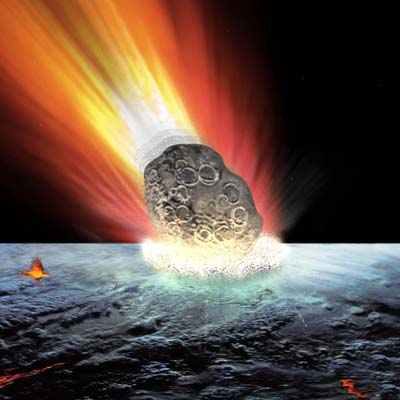Nothing could be further from the truth.
NASA’s mandate, given by the U.S. Congress in 1998, is merely to find and catalog the orbits of at least 90 percent of the near-Earth asteroid (NEO) population larger than 1,100 yards (1 kilometer) across. This led to the creation of the multi-national Spaceguard Survey, which, at the time of this writing, has discovered over 800 large NEOs. Astronomers estimate this is about 75 percent of the total in the target size range. The survey should reach the 90-percent level sometime in 2008 or 2009 — on schedule and within budget.
This is where NASA’s mandate ends.
But if NASA isn’t charged with the responsibility of protecting us from NEOs, then who is? The answer, for now at least, is no one.
Asteroid impacts are probabilistic events, which mean action must be taken before we can be certain of impending disaster. Suppose Apophis had a non-zero chance of striking in the Gulf of Mexico in April 2036. What level of risk would be necessary before you would consider mounting a spacecraft deflection mission costing hundreds of millions of dollars? 1 in 1,000? 1 in 100? 1 in 10? 1 in 2?
You could do nothing, and just let nature take its course. By doing so, you’d be betting against an impact — and that millions of people living in coastal areas would not need to evacuate. Lose that bet, and the cost will be far greater than a few hundred million dollars.
This all adds up to a colossal headache, and governments have enough of those.
Things are changing, albeit slowly. Groups like the B612 Foundation are pressing Congress, NASA, and the Department of Defense to develop vehicles and technologies that can be used to deflect asteroids. So far, no one is stepping up to the plate. But there has been a lot of discussion — thanks to Apophis.










